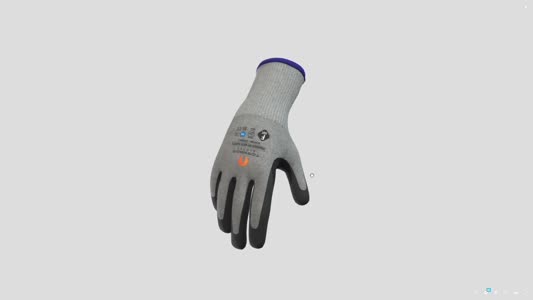
 |
Mark Sennett
Managing Editor |
 |
Kelly Rose
Editor |
ARTICLE
Regulator “fails to acknowledge true scale of cancer caused by workâ€
23 January 2013
A pressure group has warned the HSE that it needs to change its "unrealistic" and "ignorant" approach to occupational cancer if thousands more cases and deaths are to be prevented.
A pressure group has warned the HSE that it needs to change its "unrealistic" and "ignorant" approach to occupational cancer if thousands more cases and deaths are to be prevented. The Hazards Campaign has called the HSE intervention paper on occupational cancer, which was presented to the HSE Board meeting on 22nd August, a "fairy tale unrealistic view of the world of work today".
Campaigners went on to state that the paper "ignores many known carcinogens, shows little interest in finding unknown exposures, underestimates the numbers of workers exposed and shows no sense of urgency to tackle this massive but preventable workplace epidemic. Because of the lack of action now, more people will develop occupational cancers and die from them in the futureâ€.
The HSE's Long Latency Health Risks Division estimates that occupational cancer accounts for around 8000 of the estimated annual toll of 12,000 deaths from occupational ill health, and some 14,000 new cases a year. This is based on a study funded by the HSE and published in the British Journal of Cancer in June this year.
The paper presented to the board outlined how the Executive is addressing this via a range of interventions and by focusing on 10 priority agents/occupations to help it identify where its efforts will have the most impact.
The Hazards Campaign, however, says that the true annual figures are nearer 18,000 deaths and 30,000 registrations, and blames the HSE's reliance on epidemiology - looking primarily at the specific organs in the body affected by cancer, rather than the actual causes - for its own vision.
One example used is diesel fumes exposure: The HSE estimates that over 10,000 workers have an increased risk of cancer because they work in diesel-exposed jobs, while the actual number of Great Britain's diesel-exposed workforce is more than a million.
Occupational cancer researcher Simon Pickvance warns: “The HSE has been in denial about work cancer for over three decades, depending far too heavily on epidemiology which is only capable of seeing widespread, long-established problems among large numbers of workers, employed for long periods of time, in large workplaces such as mines, mills and manufacturing.
“This is totally unsuitable for today's smaller and fast-evolving workplaces with more complex, and diverse exposures. It is incapable of picking up high risk exposures affecting smaller groups of workers.†he added.
The Hazards Campaign wants the HSE to stop dithering and says that the inquiry should identify high risk groups and look at case studies, industrial hygiene and toxicological studies to reveal the risks faced in different jobs.
Campaigners went on to state that the paper "ignores many known carcinogens, shows little interest in finding unknown exposures, underestimates the numbers of workers exposed and shows no sense of urgency to tackle this massive but preventable workplace epidemic. Because of the lack of action now, more people will develop occupational cancers and die from them in the futureâ€.
The HSE's Long Latency Health Risks Division estimates that occupational cancer accounts for around 8000 of the estimated annual toll of 12,000 deaths from occupational ill health, and some 14,000 new cases a year. This is based on a study funded by the HSE and published in the British Journal of Cancer in June this year.
The paper presented to the board outlined how the Executive is addressing this via a range of interventions and by focusing on 10 priority agents/occupations to help it identify where its efforts will have the most impact.
The Hazards Campaign, however, says that the true annual figures are nearer 18,000 deaths and 30,000 registrations, and blames the HSE's reliance on epidemiology - looking primarily at the specific organs in the body affected by cancer, rather than the actual causes - for its own vision.
One example used is diesel fumes exposure: The HSE estimates that over 10,000 workers have an increased risk of cancer because they work in diesel-exposed jobs, while the actual number of Great Britain's diesel-exposed workforce is more than a million.
Occupational cancer researcher Simon Pickvance warns: “The HSE has been in denial about work cancer for over three decades, depending far too heavily on epidemiology which is only capable of seeing widespread, long-established problems among large numbers of workers, employed for long periods of time, in large workplaces such as mines, mills and manufacturing.
“This is totally unsuitable for today's smaller and fast-evolving workplaces with more complex, and diverse exposures. It is incapable of picking up high risk exposures affecting smaller groups of workers.†he added.
The Hazards Campaign wants the HSE to stop dithering and says that the inquiry should identify high risk groups and look at case studies, industrial hygiene and toxicological studies to reveal the risks faced in different jobs.
MORE FROM THIS COMPANY
- RIDDOR reporting to move online
- £280k fine after Cheshire oil worker is paralysed
- Two companies fined after fatality in Brentford
- Global manufacturer prosecuted over factory worker's death
- Myth of the month
- Shell ordered to pay £1.5m over Bacton gas explosion
- Construction company fined after worker blinded in fall
- Worker's arm dragged into industrial conveyor belt
- HSE sets out first pieces of legislation to be cut
- High street retailer fined £1 million for safety failings
RELATED ARTICLES
- No related articles listed
OTHER ARTICLES IN THIS SECTION























